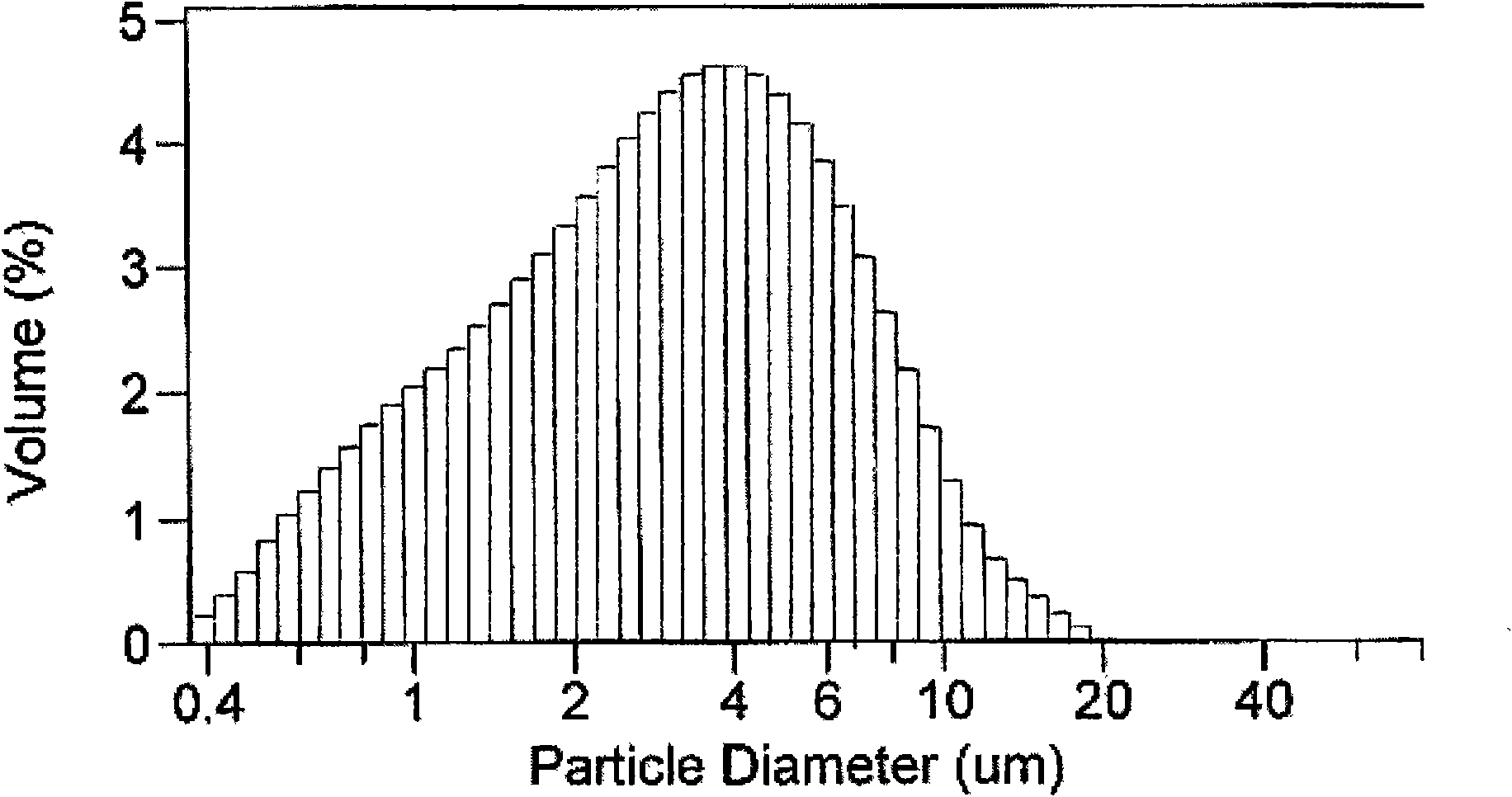Preparation process of lithium iron phosphate material
A lithium iron phosphate, preparation technology, applied in the direction of electrode manufacturing, phosphorus compounds, inorganic chemistry, etc., can solve the problems affecting the performance of lithium iron phosphate materials, restricting large-scale production, etc., to achieve shortened sintering time, good repeatability, The effect of increasing production
- Summary
- Abstract
- Description
- Claims
- Application Information
AI Technical Summary
Problems solved by technology
Method used
Image
Examples
Embodiment 1
[0021] Weigh 45 grams of LiOH*H 2 O, dissolved in 300 milliliters of deionized water, added 30 grams of polyethylene glycol, stirred, heated to 60 degrees, dissolved to form a homogeneous solution; weighed 190 grams of FePO 4 *xH 2 O, put in gradually, stir continuously, heat and keep the temperature at 60 degrees; FePO 4 *xH 2 After adding O, add 30 grams of sucrose; heat and stir for 30 minutes to stop heating, and continue stirring until the temperature of the mixed material is lower than 30 degrees; finally put the mixed material into a 100 degree oven for drying, and put the dried material into In the tubular muffle furnace, under the protection of nitrogen gas, the temperature is raised to 350°C in 1 hour, and the temperature is kept constant for 3 hours; the temperature is raised to 600°C in 1 hour, and the temperature is maintained for 7 hours; the temperature is raised to 700°C in 0.2 hours, and the temperature is maintained for 1 hour. ;Finally, after cooling down...
Embodiment 2
[0023] Weigh 45 grams of LiOH*H2O, dissolve it in 300 milliliters of deionized water, add 10 grams of polyethylene glycol, stir, heat to 70 degrees, and dissolve to form a homogeneous solution; weigh 190 grams of FePO 4 *xH 2 O, put in gradually, stir continuously, heat and keep the temperature at 70 degrees; FePO 4 *xH 2 After adding O, add 20 grams of sucrose; heat and stir for 30 minutes to stop heating, and continue stirring until the temperature of the mixed material is lower than 30 degrees; put the mixed material into a 100 degree oven and dry for 4 hours; after drying, put the material into the tube In a type muffle furnace, under the protection of nitrogen gas, the temperature was raised to 500°C in 2 hours, and the temperature was kept constant for 5 hours; after that, the temperature was raised to 700°C in 2 hours, and the temperature was kept constant for 9 hours; the temperature was raised to 750°C in 1 hour, and the temperature was kept constant for 2 hours; Fi...
PUM
| Property | Measurement | Unit |
|---|---|---|
| particle diameter | aaaaa | aaaaa |
| diameter | aaaaa | aaaaa |
Abstract
Description
Claims
Application Information
 Login to View More
Login to View More - R&D
- Intellectual Property
- Life Sciences
- Materials
- Tech Scout
- Unparalleled Data Quality
- Higher Quality Content
- 60% Fewer Hallucinations
Browse by: Latest US Patents, China's latest patents, Technical Efficacy Thesaurus, Application Domain, Technology Topic, Popular Technical Reports.
© 2025 PatSnap. All rights reserved.Legal|Privacy policy|Modern Slavery Act Transparency Statement|Sitemap|About US| Contact US: help@patsnap.com


